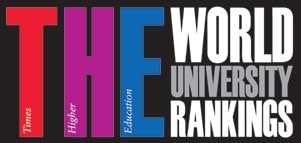
Australia’s number one institution, the University of Melbourne, has shot up from 37th in the rankings last year to inside the top 30, at 28th. It has widened its lead on second-placed Australian National University (ANU), which moved up from 38th to 37th. The University of Sydney was one of the few Australian institutions to drop – but only marginally from 58th to 62nd.
Australia has also gained an additional top 200 university, with the University of Adelaide entering the top 200 at 176th.
Of Australia’s eight top 200 representatives, six improved their positions. The generally good news for the whole Australian sector is reflected in a new analysis that examines the average movement of the top 200 institutions in each country. On this measure, Australia saw the third-biggest ranking improvement in the world, with its top 200 institutions rising an average of 15 places. This compares to the US and UK, which have seen average falls of more than six places each.
Phil Baty, editor of Times Higher Education rankings, said: “Despite high-profile problems with international student recruitment, and some reputational challenges, this has been a really strong year for Australia. Not only has it gained an additional representative in the top 200 since last year, but the majority of Australian institutions have improved their positions.
“The improvements are primarily down to better scores for research, in both scholarly papers per staff and citation impact. It is also clear that Australia is investing in its universities.”
The California Institute of Technology has retained its place at the top of the World University Rankings for 2012-13, with Harvard University pushed into fourth place by the UK’s University of Oxford and Stanford University, which share second place.
As with last year, the US utterly dominates the rankings, taking seven of the top 10 places. This year it has 76 institutions in the top 200 in total — one more than last year. But the dominance of the US masks worrying falls for many of its institutions, in stark contrast to significant gains among Asia-Pacific universities.
Of the US’s 76 top 200 representatives, 51 fell down the table in the face of mounting competition from heavy-spending Asian nations.
The Times Higher Education World University Rankings are the world’s most comprehensive and carefully calibrated global rankings, using 13 separate performance indicators to examine a university’s strengths against all of its core missions – teaching, research, knowledge transfer and international outlook. All data are collected, analysed and verified by global data provider Thomson Reuters.
This year’s rankings, which employ an identical methodology to the 2011-12 rankings for clear year-on-year comparisons, provide firm new evidence of a power shift from west to east in global higher education and research.









